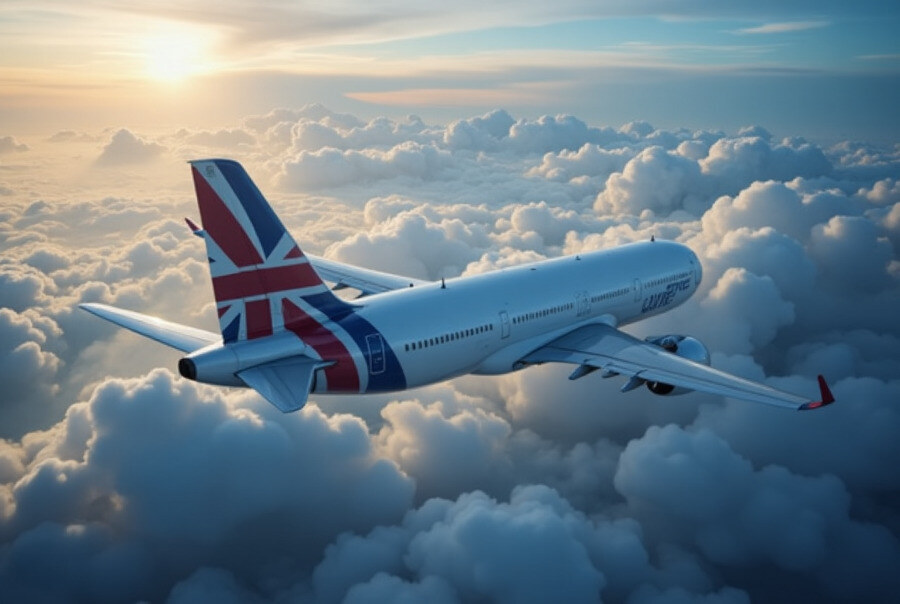Published on
August 31, 2025
United Kingdom scientists are warning that climate change is set to dramatically increase turbulence on global flight routes, driven by disruptions in high-altitude jet streams. As the planet warms, atmospheric stability is weakening while wind shear intensifies, creating ideal conditions for clear-air turbulence—a dangerous and unpredictable form of turbulence that strikes without warning. This shift means future air travel could face longer seatbelt restrictions, more flight adjustments, and higher safety risks for passengers and crew worldwide.
For many travelers, the sudden jolt of turbulence is one of the most unsettling experiences during a flight. While such moments have long been considered a normal part of air travel, scientists are now warning that turbulence could become far more frequent and severe as global temperatures rise.
Recent research from the University of Reading in the United Kingdom has revealed that climate change is altering the dynamics of high-altitude jet streams—the powerful wind currents that play a critical role in shaping global weather patterns and guiding commercial aircraft across continents. These shifts in atmospheric circulation are leading to greater instability at cruising altitudes, creating conditions that increase the likelihood of turbulence during flights.
Jet streams, located at altitudes where most commercial jets operate—around 35,000 feet—are highly sensitive to temperature differences between the equator and the poles. As the Earth warms, particularly in polar regions, these gradients are changing, and so are the wind patterns. According to the study, this disruption is expected to have long-term implications for aviation safety and passenger comfort.
The analysis builds on earlier findings that already showed a sharp rise in turbulence incidents over the past few decades. Historical data indicated an increase of more than 50 percent in serious turbulence events between 1979 and 2020. The new projections go even further, estimating that by the end of this century, wind shear in jet streams could intensify by 16 to 27 percent, while atmospheric stability may decline by 10 to 20 percent. These conditions are ideal for the development of clear-air turbulence—a particularly hazardous type that occurs without visible cues such as clouds and cannot be detected by traditional onboard radar systems.
Clear-air turbulence, unlike turbulence caused by storms or mountainous terrain, strikes without warning, leaving pilots with little opportunity to adjust flight paths in advance. As a result, passengers who are not wearing seatbelts and cabin crew moving through the aisle are especially vulnerable to injury. This form of turbulence has been linked to numerous incidents involving severe injuries and, in rare cases, fatalities.
To reach these conclusions, researchers examined data from 26 global climate models, focusing on atmospheric conditions at typical cruising altitudes. The results show that the upper-level atmosphere is likely to become more turbulent in both hemispheres, with no major flight corridor immune to the trend. Regions such as the North Atlantic, one of the busiest transoceanic routes, are expected to experience some of the most significant increases.
The implications for the aviation industry are considerable. Airlines may need to adopt stricter safety protocols, including keeping seatbelt signs illuminated for longer periods during flights. Pilots may also need to adjust routes and altitudes more frequently to minimize turbulence exposure, though this could lead to longer flight times and increased fuel consumption.
Beyond operational challenges, the increase in turbulence raises questions about passenger experience and comfort. Turbulent flights are among the most common triggers of anxiety for travelers, and an environment where sudden jolts become more frequent may heighten stress levels for many. In addition, airlines could face rising costs associated with injuries, compensation claims, and potential structural wear on aircraft over time.
While turbulence has long been considered an unavoidable aspect of air travel, the projected changes point to a future where it becomes not just a nuisance but a significant operational and safety concern. The research underscores the complex ways in which climate change is reshaping systems far beyond the Earth’s surface—affecting even the skies through which millions of people travel each day.
Climate change is destabilizing jet streams at cruising altitudes, and UK researchers warn this will dramatically increase severe turbulence on global flight routes, making future air travel riskier and less predictable.
As the aviation sector continues to adapt to environmental challenges, these findings serve as a reminder that global warming is not just a ground-level issue. From flight planning to passenger safety measures, the industry may need to prepare for a future where the skies grow increasingly unstable.



